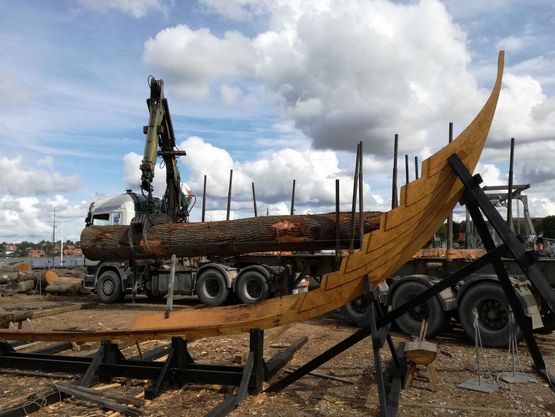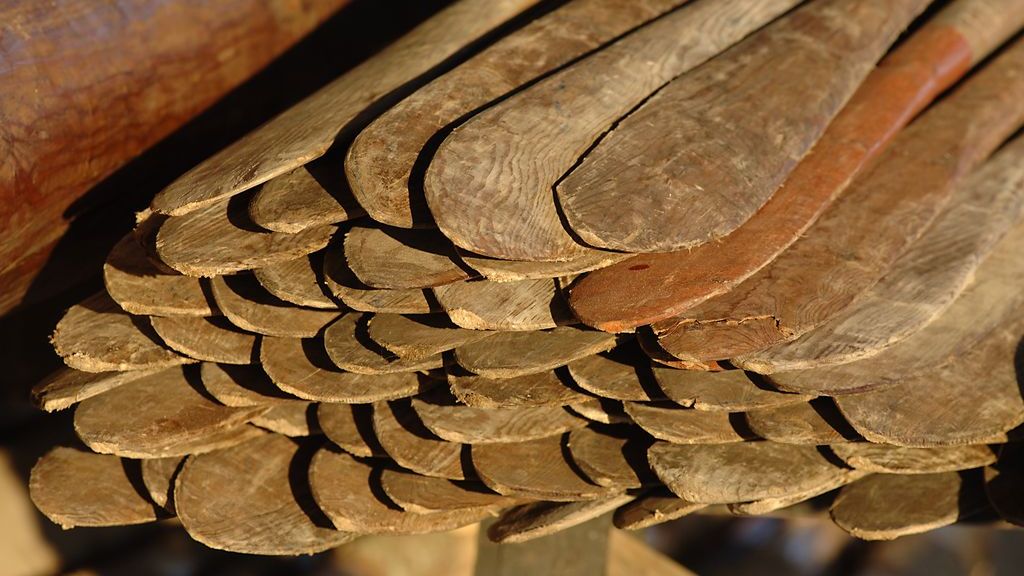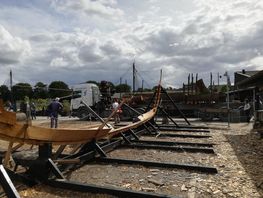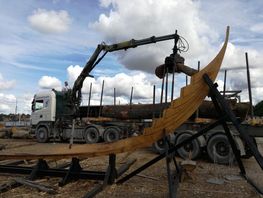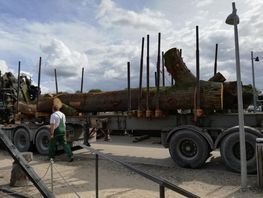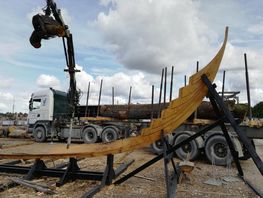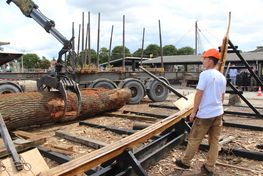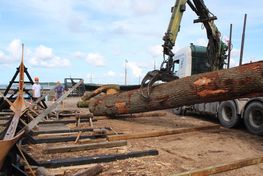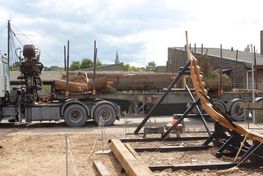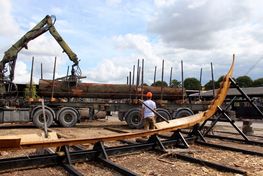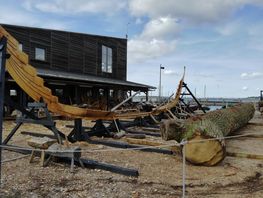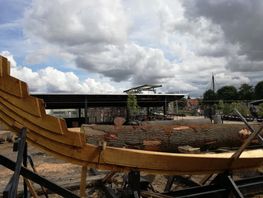The heavy, rhythmic beat of mallets against wedges that slowly work their way into the impressive 200 year old oak is like a 1,000 year old pulse that’s been brought back to life. The excitement mounts in time with the sounds from the strong oak, as it creaks with each of the boatbuilders’ well-aimed blows.
Wednesday 6th September at 10:00, the boatbuilders will begin cleaving an 8 meter long oak log with a diameter of ca. 1m. An oak of this size is roughly 200 years old.
“The plan was to have two oak logs delivered last Friday but the driver had a problem with lifting the largest and heaviest of the logs”, tells boatbuilder Martin Dael. “Therefore, we’ll cleave the ‘little’ log first and the larger one will be delivered here on Friday (September 8th)”.
You wouldn’t exactly call the log ‘little’ though – it’s estimated to have a weight of 7.5-8 tons. In order to cleave the massive log, the boatbuilders first create a small split in the root end of the log and then slowly – using larger and larger wedges and lots of heavy blows from mallets – they force the fibres in the oak to separate until the massive log splits in two.
The two halves are then cleaved further into quarters and then again to smaller pieces until the entire log has been cleaved into wedge shaped sections, ready to be hewn smooth to ship’s planks – or boards, as they’re called on a ship.
The Vikings didn’t use saws
The Viking Ship Museum’s boatbuilders are building a reconstruction of a Viking ship in full-scale, the so-called Skuldelev 3 ship-find: a small trading ship from ca. 1040, which was found near Skuldelev in Roskilde Fjord over 50 years ago.
“When we build a Viking ship, the most important thing is that we reconstruct the ship as closely to the original as possible, by using the same tools, techniques and methods as they did in the Viking Age”, tells boatbuilder Martin Dael. “In the Viking Age, saws weren’t used for boatbuilding. Therefore, we also use the ancient technique of cleaving in order to produce planks from large logs, just as they did 1,000 years ago.”
Info:
- The cleaving starts at 10:00, Wednesday September 6th
- The oak was felled earlier this year in Jægersborg Hegn
- The log has a weight of 7.5-8 tons and a length of 8 meters
- In all, the ship will have 8 strakes – in other words, 8 rows of planking in its hull
- When the boatbuilding season ends this year, the boatbuilders expect to the finished with the second strake.
- Construction of the ship began on the 1st May 2017 and can be followed at the Viking Ship Museum during the next three years until the launch in 2019, where the Viking Ship Museum will celebrate its 50th year.
Skuldelev 3 Revisited:
The ship-find Skuldelev 3, was excavated from Roskilde Fjord near Skuldelev in 1962. It was found together with four other Viking ships – the so-called Skuldelev ships – which can all be seen on display at the Viking Ship Museum in Roskilde.
The five Viking ships are dated to the last half of the Viking Age, ca. 1040.
The Skuldelev ships were intentionally scuttled across a sailing channel leading to the important trading town of Roskilde, to prevent attack from enemy ships.
In 1982-84, the Viking Ship Museum began the first reconstruction of Skuldelev 3, but after more than 30 years of service, it’s no longer seaworthy.
During the last 30 years, the Viking Ship Museum has built reconstructions of all five of the Skuldelev ships. These reconstructions can be seen at the Viking Ship Museum – when they’re not out sailing on voyages!
The building of the new reconstruction began on May 1st 2017 and can be followed at the Viking Ship Museum for the next three years until the expected launch in 2019, where the Viking Ship Museum can also celebrate its 50th year.
